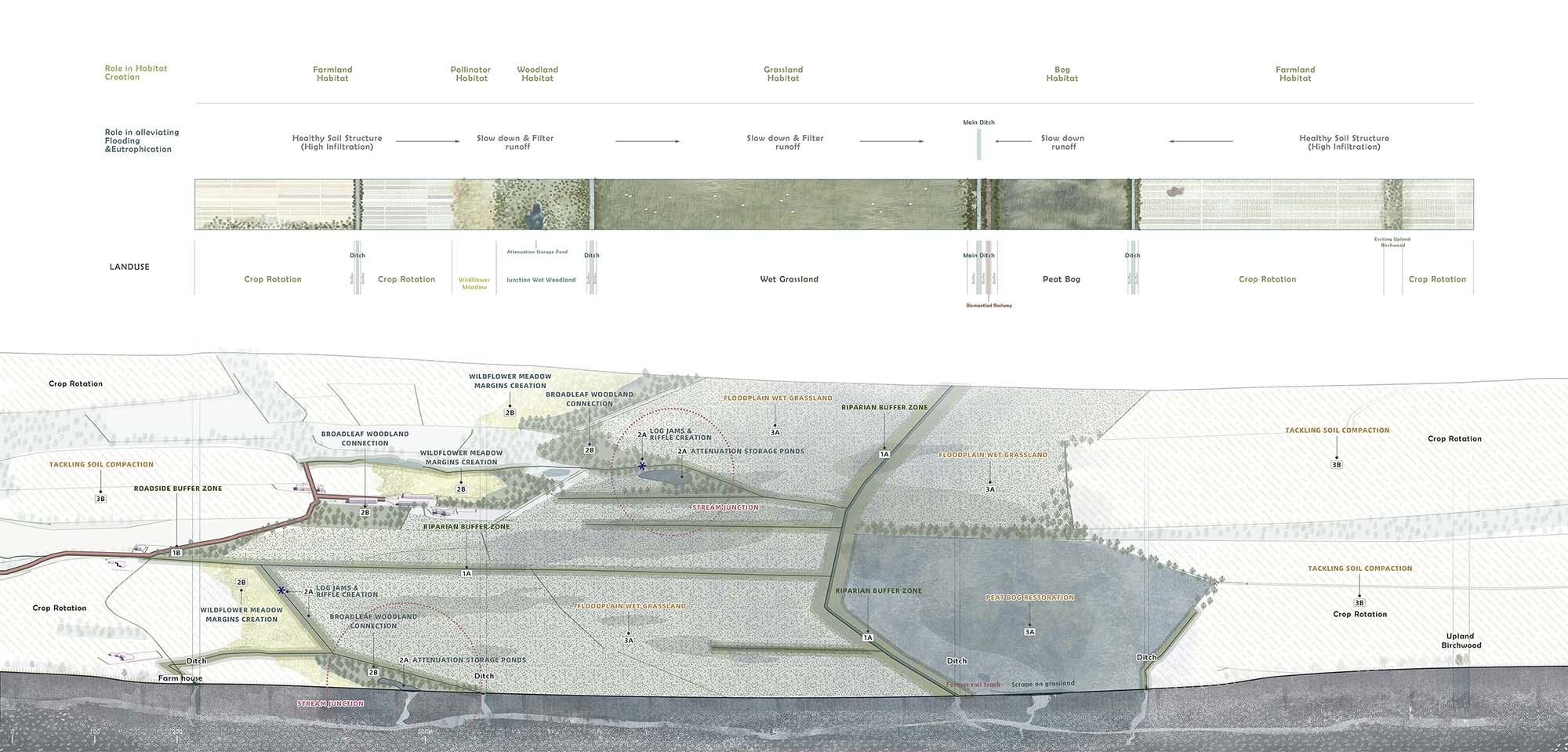Pow Water Is a branch in the middle reaches of the River Earn River basin. This lowland was once a flood marsh, in the 13th century, an artificial ditch -- Pow Water was excavated here to drain the marsh, Since then, human activities (including grazing and agriculture, deforestation) have begun to colonize and expand in this tributary basin, reducing groundwater levels and biodiversity, and destroying natural habitats. Nowadays, the Pow Water basin has been completely occupied by intensive agriculture, and agricultural production has seriously affected the health of water and soil, and seasonal flooding has become an increasingly serious issue. How to alleviate the existing environmental problems and cope with the future environmental challenges? What will be the future of agriculture? This project does not aim to answer all these questions, but to learn about new alternatives, and explores creative ways of imagining the future.
The project name is cultivating wetness and is the process of increasing the groundwater table, maintaining carbon lock- -and creating important habitat. The project site is focused on the area of the basin most affected by floods and with the most agricultural land coverage, the design challenges the existing land use of the site, it illustrates a possible temporal alternative, in the changeable climate crisis on the basis of temporal external drive, through periodically adjust the land use of the floodplain (from wet grassland to paludiculture), thinking the possibility of the future green transition of rural economy and the possibility of creation of diversified habitat and non-traditional rural landscape.






















